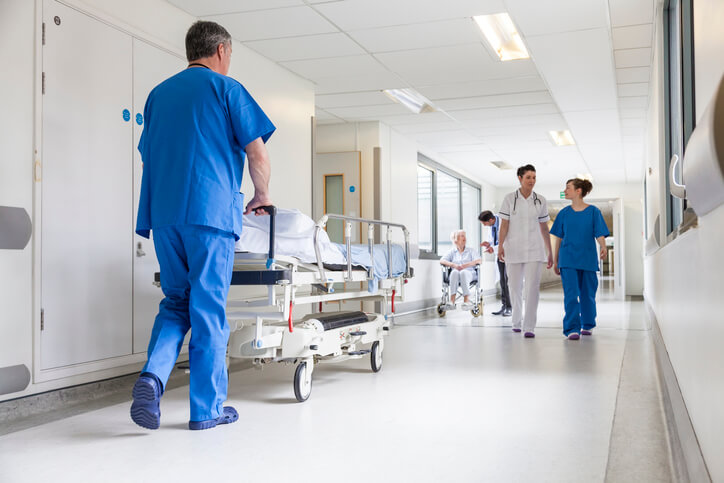The Importance of Ventilation in Health Care Facilities
In this crucial time of medical uncertainty during COVID-19, HVAC systems have a big job to do. They help to maintain the health and safety of patients and employees in health care facilities. For example, medical gas systems (which transport gases like oxygen and nitrogen) are essential for sustaining life, critical use, and medical supplies. Also, ventilation and filtration systems work to reduce the spread of airborne contaminants and keep the indoor air quality (IAQ) safe. Thus, helping to protect the health of more vulnerable populations, such as the immunocompromised and the elderly. Learn more about some of the essential components of ventilation in health care facilities below.
How Ventilation Works in Health Care Facilities

Proper ventilation in healthcare facilities has never been more important than right now. With improper pressurization (negative or positive), airborne contaminants can escape.
Properly designed and installed ventilation systems use dilution, filtration, and pressurization to help reduce the risk of airborne contamination. Ventilation systems rely on ductwork to move air from one location to another. Using filters, the air is then cleaned and released into hospital areas. This includes patient rooms, recovery areas, operating rooms, and more.
In hospitals and other medical facilities, the ventilation system is more complex as specific rooms must be either positively or negatively pressurized. Ultimately, this will depend on the needs of the patient and employees. But, some of the main objectives are to protect patients from airborne contaminants and decrease hospital infections.
Positive Pressure Rooms
Positive pressure rooms pump clean, filtered air into the room. They are most commonly used for patients with compromised immune systems. Ultimately, the goal is to ensure that airborne pathogens won’t contaminate a patient, equipment, or supplies in a room. Therefore, extra air pumps into the room and pushes out harmful contaminants. In fact, positive pressure rooms are typically the cleanest rooms in a hospital. According to the 2014 Facility Guidelines Institute (FGI), some of the hospital rooms that must always be under positive pressure include:
- Operating rooms
- Delivery rooms
- Trauma rooms
- Newborn intensive care
- Protective environment rooms
Negative Pressure Rooms
Conversely, negative pressure rooms pull air out of the room. Specifically, this means that the system pulls contaminants out of a room and transports it to the outside air. This technique is most common for infection control (e.g. patient isolation rooms). Overall, negative pressure rooms prevent germs from spreading to other areas of the hospital. Some additional negative pressure rooms in health care facilities include the following:
- Airborne infection isolation (AII) rooms
- ER waiting rooms
- Bathrooms
- Laboratory work areas
- Autopsy rooms
HVAC Maintenance Matters More Than Ever
Proper ventilation in healthcare facilities has never been more important than right now. When rooms are not properly pressurized (negative or positive), airborne contaminants can escape. Thus, putting the health of patients, staff, and visitors at risk. Needless to say, downtime is simply not an option for most hospitals. Therefore, you cannot overlook or ignore HVAC maintenance. This also includes regular cleaning and monitoring to prevent issues.
Looking for a reliable commercial HVAC company that is well versed in medical gas systems? Call on The Severn Group. We are highly trained and experienced at the installation and maintenance of medical gas systems. We also have 24/7 emergency service and scheduled maintenance contracts. So, if you’d like to talk about your hospital’s HVAC needs, please contact us at (301) 249-4062.
